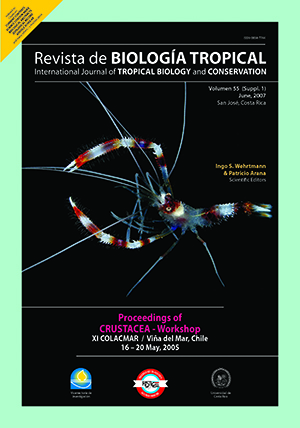Resumen
The population dynamics and structure of the cirolanid isopod Excirolana armata were studied from January 2004 through March 2005 in three sandy beaches of Buenos Aires Province (Argentina). Beaches with different types of anthropogenic influences were selected. The von Bertalanffy's growth function parameters were determined for each population. There was a marked fluctuation in growth, with lowest rates in late autumn and winter. The isopod population of the beach exposed to the highest degree of anthropogenic erosion had the lowest and most stable values of abundance and biomass, the highest mortality rate and the shortest life span. Temporal fluctuations of the allometric coefficient of the length-dry weight relationship indicated a cycling pattern, with lowest values during the autumn-winter period and peak values in the summer. Females predominated in the populations due to the short duration of the reproductive season. Argentine and Uruguayan populations showed similar growth performance indices, but differed in their abundance and biomass values, probably as a response to variations in beach morphodynamics and biological interactions.##plugins.facebook.comentarios##

Esta obra está bajo una licencia internacional Creative Commons Atribución 4.0.
Derechos de autor 2007 Revista de Biología Tropical






